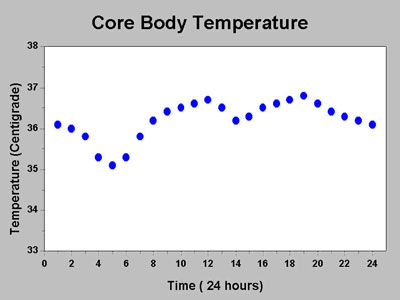Abnormal Development - Maternal Hyperthermia
| Embryology - 27 Apr 2024 |
|---|
| Google Translate - select your language from the list shown below (this will open a new external page) |
|
العربية | català | 中文 | 中國傳統的 | français | Deutsche | עִברִית | हिंदी | bahasa Indonesia | italiano | 日本語 | 한국어 | မြန်မာ | Pilipino | Polskie | português | ਪੰਜਾਬੀ ਦੇ | Română | русский | Español | Swahili | Svensk | ไทย | Türkçe | اردو | ייִדיש | Tiếng Việt These external translations are automated and may not be accurate. (More? About Translations) |
| Educational Use Only - Embryology is an educational resource for learning concepts in embryological development, no clinical information is provided and content should not be used for any other purpose. |
Introduction
High core body temperature, hyperthermia, has been shown in animal models to be a potent teratogen. Hyperthermia in humans (greater than 39.5°C/103°F) during the first trimester increases the risk of a miscarriage and neural defects.
Note in contrast to animal studies, a recent human study on "fever" using the Danish National Birth Cohort[1] where 8321 women reported fever during first trimester found: "did not show any association between maternal fever in pregnancy and risk of congenital anomalies." ("fever" was only based upon phone interviews)
Hyperthermia can be due to many different factors including: environment, hot tubs, spas, sauna, exercise, infection fever (viral, bacterial), physiological abnormalities of thermoregulation. A difficult associated concept is that of "thermal dose", whereby in experimental conditions the thermal load variables (temperature change, temperature, time) can be highly regulated, in real biological conditions these can be extremely variable including the additional variables of absolute time of exposure and developmental stage.
Guinea pigs have been successfully used as a sensitive model system for the effects of maternal hyperthermia (high body temperature/fever) upon development. This is an example of a maternal environmental effect on embryonic development and neurological effects has also been demonstrated in other rodent model systems.
| Bacterial Links: bacterial infection | syphilis | gonorrhea | tuberculosis | listeria | salmonella | TORCH | Environmental | Category:Bacteria |
Some Recent Findings
The Danish National Birth Cohort is a population-based cohort of 100,418 pregnant women and their offspring recruited in 1996 to 2002. Information on fever during pregnancy was collected prospectively by means of two telephone interviews. The study population comprised the 77,344 pregnancies enrolled in the Danish National Birth Cohort where self-reported information on fever during first trimester of pregnancy was available. Pregnancy outcomes were identified through linkage with the National Patient Registry. Congenital malformations within the first three and a half years of life were categorized according to EUROCAT's classification criteria. Logistic regression models were used to estimate the associations between fever in first trimester and overall congenital malformations and congenital malformations by subgroups. Eight thousand three hundred twenty-one women reported fever during first trimester (10.8%) and 2876 infants were diagnosed with a congenital malformation (3.7%). Fever during first trimester did not affect the risk of overall fetal congenital malformation (OR 0.99, 95% CI 0.88-1.12). The subgroup analyses indicated slightly higher risk of congenital anomalies in the eye, ear, face and neck (OR 1.29, 95% CI 0.78-2.12) and in the genitals (OR 1.17, 95% CI 0.79-1.12), whereas lower risk of malformations in the nervous system (OR 0.47, 95% CI 0.21-1.08), the respiratory system (OR 0.56, 95% CI 0.23-1.29) and in the urinary subgroup (OR 0.58, 95% CI 0.35-0.99) was suggested, the latter constituting the only statistically significant finding. Overall, this study did not show any association between maternal fever in pregnancy and risk of congenital anomalies."
|
| More recent papers |
|---|
|
This table allows an automated computer search of the external PubMed database using the listed "Search term" text link.
More? References | Discussion Page | Journal Searches | 2019 References | 2020 References Search term: Maternal Hyperthermia |
Diurnal Temperature Changes
In humans there are a number of small changes that occur each day and associated with the menstral cycle, neither of which are significant enough to cause hyperthermia.
Firstly there natural diurnal small changes in core body temperature that occur each day.
Secondly, in women of reproductive age there occurs also a small approximately 0.5°C increase in body temperature associated with ovulation during the menstral cycle. This temperature rise is often used in reproductive cycle monitoring to aid or avoid pregnancy.
Neural Tube Defects
Neural tube and other developmental anomalies in the guinea pig following maternal hyperthermia during early neural tube development.[4] "Guinea pigs were exposed to hyperthermia for 1 hr once or twice on day 11, 12, 13, or 14 (E11-E14) of pregnancy. The mean rectal temperatures were elevated by 3.4°C -4.0°C. This treatment resulted in a marked elevation of rates of resorption and developmental defects in embryos examined at day E23. The defects observed were those affecting the neural tube (NTD) (exencephaly, encephaloceles, and microphthalmia), kyphosis/scoliosis, branchial arch defects, and pericardial edema. Embryos with NTD and kyphosis/scoliosis have not been found among newborn guinea pigs to date following maternal heat exposure on days E12-E14. It appears that embryos with these defects are filtered out by resorption or abortion by days E30-E35."
Marsh Edwards
Edwards: discoverer of maternal hyperthermia as a human teratogen.[5] "In a series of animal studies performed over a career spanning 40 years at the University of Sydney, Professor Marshall J. Edwards investigated the hypothesis that maternal hyperthermia during gestation can be teratogenic to the developing fetus. He is one of few investigators to have discovered a known human teratogen primarily through animal studies. His doctoral thesis was entitled "A Study of Some Factors Affecting Fertility of Animals with Particular Reference to the Effects of Hyperthermia on Gestation and Prenatal Development of the Guinea-Pig". He went on to prove that hyperthermia-induced malformations in animals involve many organs and structures, particularly the central nervous system. ... In a series of carefully planned and executed experiments, he demonstrated that the type of defect is related to the timing of the hyperthermic insult, and analyzed the underlying mechanisms.
Pregnancy Exercise Guidelines
American College of Obstetricians and Gynecologists
These new recommendations and guidelines for exercise during pregnancy and the postpartum period were first published in 2002.[6] The recommendations classified absolute and relative contraindications to aerobic exercise during pregnancy. Note that regular exercise is also promoted for overall health benefits including prevention and management of gestational diabetes.
Absolute contraindications include:
- Haemodynamically significant heart disease
- Restrictive lung disease
- Incompetent cervix/cerclage
- Multiple gestation at risk for premature labour
- Persistent second or third trimester bleeding
- Placenta praevia after 26 weeks gestation
- Premature labour during the current pregnancy
- Ruptured membranes
- Pregnancy induced hypertension
Links: PMC1724598 | Br J Sports Med. | PDF
References
- ↑ 1.0 1.1 Sass L, Urhoj SK, Kjærgaard J, Dreier JW, Strandberg-Larsen K & Nybo Andersen AM. (2017). Fever in pregnancy and the risk of congenital malformations: a cohort study. BMC Pregnancy Childbirth , 17, 413. PMID: 29221468 DOI.
- ↑ Lee J, Mirkes PE, Paik DJ & Kim WK. (2009). Effects of maternal hyperthermia on myogenesis-related factors in developing upper limb. Birth Defects Res. Part A Clin. Mol. Teratol. , 85, 184-92. PMID: 19180648 DOI.
- ↑ Czeizel AE, Puhó EH, Acs N & Bánhidy F. (2008). Delineation of a multiple congenital abnormality syndrome in the offspring of pregnant women affected with high fever-related disorders: a population-based study. Congenit Anom (Kyoto) , 48, 158-66. PMID: 18983582 DOI.
- ↑ Cawdell-Smith J, Upfold J, Edwards M & Smith M. (1992). Neural tube and other developmental anomalies in the guinea pig following maternal hyperthermia during early neural tube development. Teratog., Carcinog. Mutagen. , 12, 1-9. PMID: 1354895
- ↑ Graham JM. (2005). Marshall J. Edwards: discoverer of maternal hyperthermia as a human teratogen. Birth Defects Res. Part A Clin. Mol. Teratol. , 73, 857-64. PMID: 16265640 DOI.
- ↑ Artal R & O'Toole M. (2003). Guidelines of the American College of Obstetricians and Gynecologists for exercise during pregnancy and the postpartum period. Br J Sports Med , 37, 6-12; discussion 12. PMID: 12547738
Journals
- International Journal of Hyperthermia There are currently 165 issues available, published between 1985 and 2010.
- The official journal of the Society for Thermal Medicine, the European Society for Hyperthermic Oncology, and the Asian Society of Hyperthermic Oncology, the International Journal of Hyperthermia provides a forum for the publication of Research and Clinical Papers
- Clinical Studies. Whole body, regional or local treatment, practical considerations in therapy, clinical trials, physiological effects, heat treatment in combination with other modalities, thermal ablation and treatment optimization.
- Biological Studies. Mechanisms of thermal injury, thermotolerance, modification of thermal response, heat treatment in combination with other modalities, effects on normal and malignant cells and tissues, immunological effects, physiological effects, thermal dosimetry, drug delivery, gene therapy.
- Techniques of Heat Delivery and Temperature Measurement. Methods of producing whole-body, regional and local hyperthermia; modelling of temperature distributions; performance and evaluation of hyperthermia and thermal ablation equipment; safety and protection; thermal dosimetry; invasive and non-invasive thermometry; calibration; and data acquisition and system control.
Reviews
Articles
Chambers CD. (2006). Risks of hyperthermia associated with hot tub or spa use by pregnant women. Birth Defects Res. Part A Clin. Mol. Teratol. , 76, 569-73. PMID: 16998815 DOI.
Padmanabhan R, Al-Menhali NM, Tariq S & Shafiullah M. (2006). Mitochondrial dysmorphology in the neuroepithelium of rat embryos following a single dose of maternal hyperthermia during gestation. Exp Brain Res , 173, 298-308. PMID: 16847614 DOI.
Milunsky A, Ulcickas M, Rothman KJ, Willett W, Jick SS & Jick H. (1992). Maternal heat exposure and neural tube defects. JAMA , 268, 882-5. PMID: 1640616
Moretti ME, Bar-Oz B, Fried S & Koren G. (2005). Maternal hyperthermia and the risk for neural tube defects in offspring: systematic review and meta-analysis. Epidemiology , 16, 216-9. PMID: 15703536
Field SB. (1988). The concept of thermal dose. Recent Results Cancer Res. , 107, 1-6. PMID: 3375545
Dewey WC. (1984). Interaction of heat with radiation and chemotherapy. Cancer Res. , 44, 4714s-4720s. PMID: 6467225
Search Pubmed
June 2010 "Maternal Hyperthermia"
Search Pubmed: Maternal Hyperthermia | thermal dose
External Links
External Links Notice - The dynamic nature of the internet may mean that some of these listed links may no longer function. If the link no longer works search the web with the link text or name. Links to any external commercial sites are provided for information purposes only and should never be considered an endorsement. UNSW Embryology is provided as an educational resource with no clinical information or commercial affiliation.
Glossary Links
- Glossary: A | B | C | D | E | F | G | H | I | J | K | L | M | N | O | P | Q | R | S | T | U | V | W | X | Y | Z | Numbers | Symbols | Term Link
Cite this page: Hill, M.A. (2024, April 27) Embryology Abnormal Development - Maternal Hyperthermia. Retrieved from https://embryology.med.unsw.edu.au/embryology/index.php/Abnormal_Development_-_Maternal_Hyperthermia
- © Dr Mark Hill 2024, UNSW Embryology ISBN: 978 0 7334 2609 4 - UNSW CRICOS Provider Code No. 00098G



